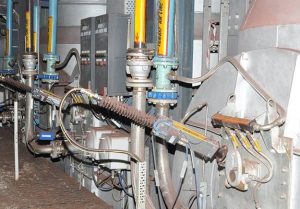Updated on March 12, 2023
Efficient Burner Operation and Selection
Combustion heaters that are inefficient may be losing you money and time. Burner functioning may be improved in a number of ways.
Figure 1 shows what I mean. The future price of gasoline is impossible to predict with accuracy, but the past shows that prices have tended to rise.
There has been a 61 percent rise in the price of industrial natural gas in the United States since 1997. Increasing gas demand by electric utilities, along with reasonably stable gas distribution infrastructure, is mostly to blame for the increased price. Natural gas prices are likely to remain high for some time to come (figure 1).

Burners and combustion heating systems should be inspected to find ways to save money on fuel expenditures. You may use these techniques to help you save money on your natural gas costs.
Modern burners use clever controls to monitor the air/fuel mixture and make automated adjustments.
TIP 1: Check Adjustment
Nozzle-mix burners of today’s current generation are very stable and reliable, even when misadjusted. When combustion equipment is out of balance, inefficiency and bad emissions are not unusual outcomes. Tuning a burner to a predetermined air/gas ratio may minimize fuel usage in a variety of ways, including by reducing unburned fuel or heat-sucking surplus air. If you need help setting up or adjusting your burner, talk to the people who made it.
TIP 2: Perform Maintenance
With natural gas, burners must also deal with temperatures of up to 3,400 oF (1,871 oC), in addition to the wear and tear on mechanical gear. This might have a negative impact on the device in a short period of time. Check the burner internals on a regular basis for signs of wear, severe oxidation, or warping. Gas nozzles, mixing plates, and bluff bodies are particularly important. Clean or replace the air filters as well.
Controlling burner ratios with a device need particular care. Included in this category are valves, connections, regulators, and the impulse lines that connect them. All of these devices should be checked for good operation and settings. Utilize the chance for an upgrade when control devices fail. Upgrades with higher control performance might be made.
Apart from mechanical wear and tear, burners have to deal with natural gas combustion temperatures of up to 3,400oF (1,871oC).
TIP 3: Consider Your Firing Method
Direct-fired operations may be converted to indirect-fired processes for a simple efficiency improvement. Combustion products can only transport around 80% of their heat via noncondensing heat exchangers. Replace indirect-fired systems with direct-fired burners wherever possible to get 5 to 20 percent more useable heat. Using a direct-fired burner as an alternative to steam heating coils in an air heater is an excellent example. The boiler and steam piping’s stack and piping thermal losses would be eliminated with this adjustment. Look at very low emission burners if you use indirect firing to avoid product interactions with combustion products.
TIP 4: Get Control
Heat is lost in temperature overshoots in most systems, and precise temperature control has been shown to reduce this loss. Gas consumption may be reduced by using modulating burners instead of on/off burners or high/low burners.
In addition to “real” turndown, some modulating burners use “simulated” turndown as well. As a result, only a portion of the burner’s operational range may be modulated using bypass lines or bypass drillings. The burner may switch to a lower fixed idle input in order to achieve greater turndowns. When this happens, temperature control accuracy is compromised, and the burner may “hunt,” alternating between control and idle, resulting in poor performance. Select burners with actual continuous turndown, not ones that use a bypass control.

